

| INTRODUCTION TO VINTAGE PC'S FOR TOTAL NEWBS |
| The Vintage IBM Compatible PC is one of the hottest platforms for "retro-gaming" in recent years. However, it is also likely to be the most difficult and most confusing platform of any to someone without prior experience with computers on a deeper level than just using one running Mac OS or Windows 10/11. So I've created this as kind of a guide to the whole shebang for those interested in it, as I likely have been doing this for an extremely long time (since 2001). Why would anyone want to do this? With today's PC's going at speeds up to 4GHz, with fully 64-bit architecture, running the latest versions of Windows, that can tether and communicate with the cloud and your other portable devices such as your cell phone, why would anyone want to use such an ancient machine. Well, here I am to tell you why... First and foremost, and the most common reason is "retro gaming". The vast majority of these pages are constructed with the DOS/Windows retro-gamer in mind since that's what my old x86 IBM Compatibles do most of the time. Some people want the original hardware, some people prefer emulation. The reasons and want to do so are as diverse as the people who are into this hobby/past-time. Everyone has their own favorite "era" whether that be like me who is mostly into the 386/486 era, or a younger Zoomer into the Pentium 4 he grew up with, or someone who started their career with the original IBM PC in 1981. You don't have to be a geek or a nerd to be into old PC's, I'm not, I'm more of a rocker/metalhead TBH, and you don't necessarily need to own or use old hardware, but knowing about how the old hardware works and what it does helps greatly in making your experiences with emulation that much better. Next is legitimate business and work-related purposes for these machines. Today's PC's are a bit more delicate and cheaply made than the old, industrial, over-engineered stuff that was slower years ago. There's no way a Core I7 in a coke-can aluminum case could survive being a 120 degree hot metal stamping and casting plant with metal particles flying everywhere, but a filtered 486 embedded PC would easily live in that kind of environment and get the job done. So not everything needs to be "left in the past" as some of it is actually still, quite current. Everything from traffic lights, to heart monitors, to assembly line controllers could be based on anything from an Intel 8088 to an early And lastly, because it can be quite fun. Some people just want to run old software to relive some old software they used in the past, while others like me do this because I also enjoy tinkering with the old hardware, like owning a classic ar or a vintage guitar. Do we really need any other reason than this?What is an IBM Compatible PC? What's the difference between it and others? 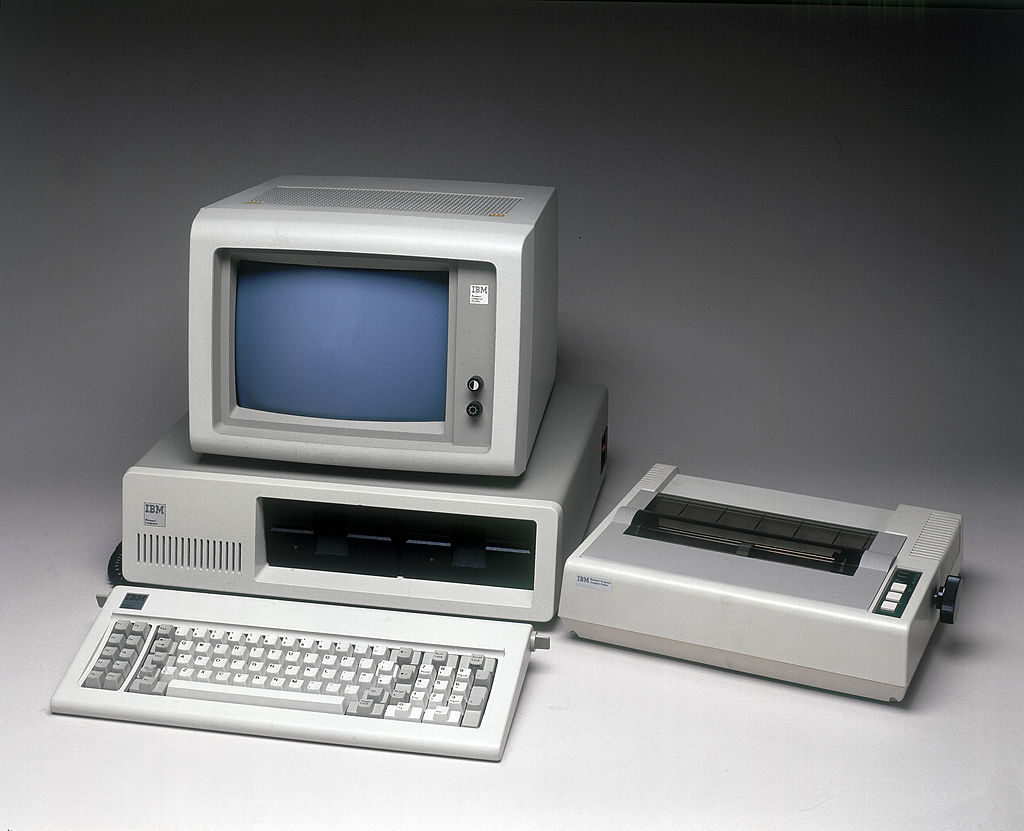 An "IBM Compatible" or "PC" pretty much refers to a personal computer or laptop that runs Microsoft Windows or MS/PC-DOS Operating systems on an Intel x86 or derivative CPU. A VINTAGE IBM Compatible PC is any of these machines deemed too obsolete to run modern software on, and has a decent following of current-day users who intend to continue to use these machines well past their "sell by" date. The oldest of these is the original IBM Personal Computer 5150 released in 1981 (left) - which was the computer that started it all and is the namesake of the terms "IBM Compatible" and "PC".
An "IBM Compatible" or "PC" pretty much refers to a personal computer or laptop that runs Microsoft Windows or MS/PC-DOS Operating systems on an Intel x86 or derivative CPU. A VINTAGE IBM Compatible PC is any of these machines deemed too obsolete to run modern software on, and has a decent following of current-day users who intend to continue to use these machines well past their "sell by" date. The oldest of these is the original IBM Personal Computer 5150 released in 1981 (left) - which was the computer that started it all and is the namesake of the terms "IBM Compatible" and "PC".The original IBM Personal Computer 5150 - as it's actually called - was a 16-bit personal desktop computer based on the intel 8088 Microprocessor, with between 64 Kilobytes and 128 Kilobytes of RAM. It came initially with 2 floppy drives, and a monochrome display, later being offered with CGA color. If you don't know what any of this stuff means, bear with me. The machine sold in 1981 for around $1500 for a base model without floppy drives, or monitor, all the way to about $3500 for a fully loaded 128K or 256K Color model circa 1983.
But the IBM PC was anything BUT a P.O.S. It's beauty lied in it's "open architecture" which allowed many 3rd party makers to create software, add-in cards, and other products for it easily with minimal R&D cost compared to a "closed architecture" machine like the Apple Macintosh that came later for the most notoirous example. This made for some pretty impressive expandibility, and also some pretty innovative ways of getting around patents to further expand the genre of these computers. By 1983, we had the first 3rd party brand successfully selling a 100% IBM Compatible product - COMPAQ. From 1984 and beyond, with the help of Phoenixview Technologies, we had a onslaught of "PC Clones" filling the market from AT&T, AST, Acer, Burroughs, Compaq, Data General, Epson, Everex, Gateway 2000, Hitachi, NanTan, NEC, Packard Bell, Quantex, Radio Shack/Tandy, Samsung, Sony, TeleVideo, Unisys...and the list goes on and on. Even oldtimers like Commodore and Atari had a PC model or two in the 80's or eearly 90's. Commonly, these computers, after 1984, started being referred to by the numerical model number of the CPU (ie 8088/8086/286/386/486) or the PC it was technically a clone of (8088/8086 = XT, 286+ = AT). They also were often referred to as "IBM Compatibles", because thats what they were, an Intel x86 architecture computer, running Microsoft DOS, IBM OS/2, or Microsoft Windows, and used all the standardized ports a regular IBM PC used to control and be controlled. And the most common use of them from about 1981-1993, was BUSINESS. It was in IBM's name anyway (International BUSINESS Machines), and thusly they were looked at as very expensive, precision, pieces of equipment. Not the "toys" that a lot of "appliance computers" (Tandy TRS-80, Commodore 16/64/128, Atari 400/800/1200 etc...) were referred to. Those were plastic, and not compatible with each other, but these IBM machines, and their compatible relatives, were made of METAL, and had the computational power to process large spreadsheets, write large documents in multiple fonts with bold/italic/underlined formatting, and in general, just seen as a more "serious" machine than these appliance machines were. If you had an IBM COmpatible in your home in that time, you likely were upper-middle-class or higher up the socio-economic ladder, and had someone in your family with a job in STEM fields, banking, or a c-suiter who was looking to the "future" of business. Not a 14 year old kid playing Ultima in his bedroom while listening to Iron Maiden. The PC did not really catch on en-masse outside of the realm of business until the ARPA project was funded a bit by Al Gore and some other politicians, scientific gurus, and other rich people in the early 1990's to create the infrastructure that would allow the Internet, and then in 1995 when Windows 95 basically set the standard for graphical user interfaces from that point onward, and things, IMHO, became a little more *boring* and homogenized. Today the PC is still in use, though today they are just referred to as "PCs", and their CPUs are called "Core i3/5/7/9", and they all run Windows 10 or 11 operating systems (with also a choice of Linux and x64 Mac OSX for intel macs to create a "Hackintosh" of sorts). But that is going more into the modern era of computing, and not vintage computing, which is what we discuss in these pages.The Eras of IBM COmpatible PC 

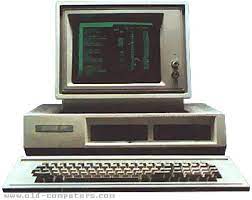

Pre-1st Generation (8088/8086, 1981-1985): IBM PC 5150 & "MS-DOS Compatibles" ie. Eagle PC, HP 150, Columbia CPC MPC-1, Tandy TRS-80 2000 These machines are really only of interest today to collectors, as they are very limited in what can be done with them due to compatibility issues, firmware issues, strange disk formats, and limited upgrade capacity. That's where they are best left to, with the only exception being the original IBM PC 5150, which itself is best left alone because it's super expensive now on the second/third hand market unless you are really, really lucky. Even then, the original IBM PC has some limitations that make it undesireable as a regular-use retro-computing machine. First off, it has an underpowered 65 watt power supply, designed to drive a motherboard with 5 slots and 2 floppy drives. It can only be upgraded to 256K RAM - and that's later revisions, the earlier computers were limited to 16K-128K memory, really limiting your software selection to mostly monochrome AsCII text mode applications. Networking is almost impossible, as is internet use unless you use a dial-up modem (ha! good luck finding a copper landline in the 21st century!). 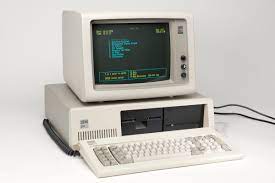
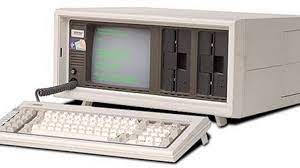
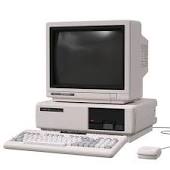
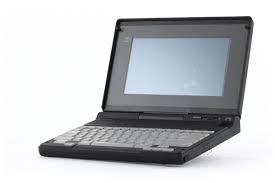
1st Generation (8088/8086, 1982-1990): IBM PC XT 5160, IBM PC JR, Tandy 1000, NEC UltraLite, Zenith SuperSport, and Compaq Portable These are the earliest generation of computers of interest to those of us who actually intend to use a vintage PC compatible for anything, including gaming, as this was the era in which the IBM & Compatible PCs were starting to get really, really good. This is one reason why this page is so long is the smorgasboard of things that can be done, even with an early eighties PC compatible, is quite wide, varied, to the point of being almost insane to try and document. You can go from an original Compaq Portable with a monochrome 10" CRT built in, and 2 360K 5.25" floppy drives with CGA and internal speaker sound - all the way to a late model XT Clone from the late 80's/early 90's with "Zero Wait State" operation, a super-screamin fast (for the era) NEC V20 or V30 CPU under the hood, 640K or even 768K of RAM, EGA, VGA, or even SVGA Graphics, and a XT-IDE card with a ginormous 8GB CF-Card Solid State storage in it - oh, and an early 8-bit compatible SoundBlaster Card. This era of computers is best for things like really, really old MS-DOS applications and games, and doing 80 column Telnet BBS and FTP server and OpenDirectory surfing over a modern Broadband internet connection using Mike Brutman's mTCP suite. Some great games that run on these include the original King's Quest I-IV, Leisure Suit Larry in the Land of the Lounge Lizards, Microsoft Flight Simulator 1 and 2, Test Drive 1 & 2, Street Fighthing Man, Ultima I/II/III/IV/V, Maniac Mansion, the original EGA release of The Secret of Monkey Island, and the original Sim City and Sim Earth. Just to name a few. 
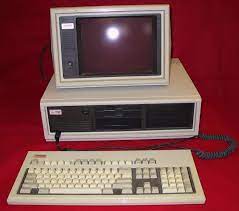

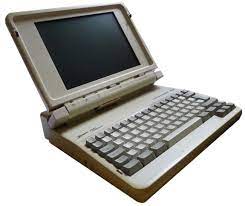
2nd Generation (286, 1984-1991): IBM PC AT 5170, Compaq Deskpro 286, Compaq Portable 286, Compaq SLT 286, IBM PS/2 Model 25 and 30 The second generation IBM Compatibles start with the IBM PErsonal Computer AT (Advanced Technology), codename "evergreen" released in 1984. This was a 286-based PC compatible, and was the first to utilize a ROM BIOS with a CMOS battery as opposed to a series of dip switches to set the system configuration. It also featured the first 1.2MB 5.25" floppies used in the industry, and featured one of the first "turbo" buttons on a commercial PC product. Of course, all the clones followed suit with Compaq's Deskpro 286, Portable 286, and SLT 286 laptop. PC's Limited became Dell computers during this time,w ith their first actual Dell products being the Dell 286 system, which featured an early version of the diagnostic system they still use to this day. Tandy had several 286-based 1000 products including the 1000 TX, TL/2, and SL/2 models. NEC even bumped their UltraLites to 286 with the 286V and 286F, and Zenith did the same with their influental "Clamshell" laptops with the SuperSport 286 and 286e. NanTan also released their first laptop product in 1990, the NanTan FMA2200 notebook.The 286 era was much maligned, often due to another probably incorrect Bill Gates quote saying that the 286 was "braindead", referring to issues switching out of the 80286 CPU's "Protected Mode" which allowed the CPU to access up to 16MB of RAM and run operating systems like Unix - of which Microsoft had a version of called Xenix which was sold as an option with the AT. It also was one of the most interesting hardware eras other than the 486. The 286 era saw a huge growth spurt in internal storage, starting the era with the old Seagate ST-506/412 standard interfaces and noisy, loud, big (in size not capacity) MFM and RLL HDD, taking us through an off-boarding of the control circuitry from the add-in card to the drive, giving us SCSI, ESDI, and later IDE, all within the same span of about 5 years, with IDE taking over as the dominant standard on IBM PCs and compatibles by about 1988 or so. If this is all greek to you, basically, the 286 is one of the most underrated and misunderstood eras of vintage PC, and are a lot more capable than they get credit for. A low end 286 would most lkely have CGA, 1.2M and 360K Floppy Drives, and 512K RAM, and a 20MB MFM HDD, while a modernized powerhouse would have SVGA, a EIDE HDD in excess of 540MB, 10mbps LAN ethernet, MS-dOS 6.22, and a screamin' 10-25MHz CPU under the hood. The common use of a 286 vintage PC was originally as a high end business workstation intended to crunch large spreadsheets and make tremendous sized word and text documents for business, or be used for fancy scientific purposes. HOwever, in the realm of retro-computing, the 286 is nothing to scoff at there either, as they are quite a surprisingly capable machine in willing hands. Due to the common proliferation of the "Turbo Switch", the 286 could be easily used for both vintage IBM PC/XT era tasks, as well as much heavier workloads with the switch in the "Turbo" position. Gamaing can range all the way back to the original stuff I mentioned in the 1st Gen section, all the way to such big and late-era DOS games such as Monkey Island 1 & 2, Lesiure Suit Larry 1/2/3, Ultima I-VI, the first two Wing Commander games, even with speech, Maniac Mansion 1 & 2, pretty much all of the SSI AD&D releases up to about 1993 or so (ie Hillsfar, Pools of Radience, Eye of the Beholder 1/2/3 and so on). 
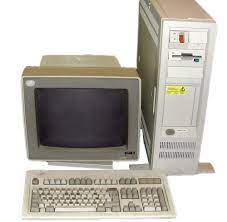

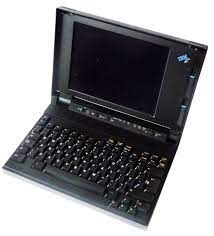
3rd Generation (386, 1986-1995): Compaq Deskpro 386, IBM PS/2 Model 70/80, IBM EduQuest 35, Dell Latitude 320n The 386 era saw a shift from the "Business PC" of the eighties, to the "Multimedia PC" of the early 1990's. An early era 386 machine usually had similar specs to a 286 machine it shared it's product line with: EGA, internal speaker sound, 2 1.2MB Floppies, a big ole' MFM/RLL/ESDI/early-IDE HDD, and a paltry 1024K-4096K memory. But by the end of the era, you could get a monster of a AMD 486 DX-40 system with 4-16MB of RAM, SVGA video, 1x or 2x CD-ROM, 1.44MB and 1.2MB Floppy drives, a sound card such as a SoundBlaster or Gravis Ultrasound, or Pro Audio Spectrum, or even a Windows Sound System card, running DOS 6.xx and Windows 3.1. Today, the 386 is an EXCELLENT choice if you want to play "Golden age of DOS Gaming" games - ie anything from about 1984-1994, with the compatibility stopping at things like Doom and Duke Nukem 3D (need a 486 to really get some pleasure out of those early First Person Shooters, save for Wolfenstein 3D). Some great turnkey solutions include Compaq's Deskrpo series, especially the later models (I use a Deskpro 386s/20 with a Blue Lightning chip in it myself personally for a lot of games). 


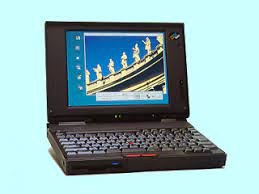
4th Generation (486, 1989-1997): ALR Access 486, Compaq SystemPro 486, Compaq Portable 486c, Dauphin DTR-1, NEC Ultralite Versa, IBM ThinkPad 300/700 series 486 hardware was an incredible step up from anything before. With shrinking die sizes and power requirements, with improving performance, doubling cache sizes, and breaking the "100MHz Barrier" with their DX4 series of CPUs. We had the earliest dedicated, high speed expansion busses that were actually a standad with EISA and VESA Local Bus (VLB), and later, some of the last 486 machines had PCI slots like a Pentium or even a rare few modern Core i-series machines might have. Early 486's had the same tiny HDDs found in 386s until about 1995 or so when ATA standards started to become a thing. A 486 could range from a pokey little 25MHz 486 SX, all the way to a screamin' Pentium killer AMD Am5x86 133 (a 133MHz 486 people often overclocked to 160MHz at the time - putting it in a speed class with a Pentium 90 or 100MHz machine). What's nuts though, is when the 486 was considered "obsolete" by 1997, it still had another 10+ years on the shelf as an EMBEDDED device category. Embedded meaning various factory machines, medical equipment, and other stuff that needs to be low power, low heat, fast, and capable of surviving in a high stress environment whether that's an ATM running OS/2, a metal milling machine in a 90 degree factory, or a traffic light! To me, the 486 is the best "tweener" system, it's just slow enough to run some of the earliest software in the PC catalog, while just fast enough to really lurch into Pentium 4 era territory almost. And the smorgasboard of hardware allows you to shift that window of compatibility wherever you want it to go. They were the last PCs to have turbo switches, and some even got cool digital readouts to go with them. They were also some of the first machines to have on-board cache, on-board math co-processors, specialized busses, high speed internal storage, high speed external storage, photorealistic graphics (SVGA/XGA). The lowest software I've run on a 486 was from circa 1983, while the newest has been running Firefox 10 on one in Windows 2000 Pro (!!!). That's a pretty wild and wide level of compatibility ranging almost 30 years across - impressive. Commoon games for the 486 era though would be things like the usuals ie Monkey Island 1 & 2, X-Wing/Tie Fighter, Descent I/II, Doom, Duke Nukem 3D (particularly DX2+ systems), I've even run Quake and Postal on these with some pretty decent performance. 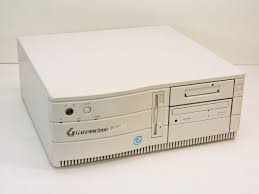
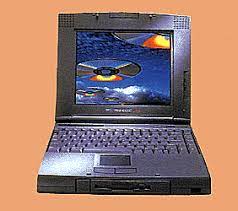
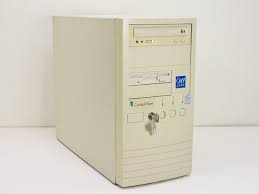
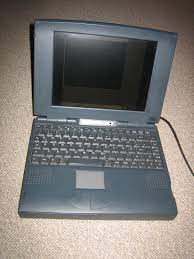
5th Generation (Pentiums, 1993-2002): Gateway 2000 P5 series, Dell OptiPlex, NEC Versa 2000/4000/6000 series, Compaq LTE, IBM ThinkPad, NEC Ready, Compaq Presario The Pentium really did not take over until 1995. I feel 1995 is the true year of demarcation between the "old school PC" and the "modern wintel machine", because before 1995, the general use case of a PC was far more specialized compared to post-1995, Prior to 1995, most games ran in DOS, business applications were a mix of easy Windows 3.x apps aimed at lower-level users, with the more professional users opting for DOS, or even having various terminal sessions through some kind of DOS or Windows 3.x client. Then 1995 comes, and your average PC was a Pentium 75-133 running Windows 95, with MSIE3 or Netscape Navigator installed, dialing into a ISP via 14.4K/33.6K modem, using Microsoft Office suite 95' or 97', and everything being done through windows with DOS applications being considered a *special case* by this point. Your average home user was listening to CDs via Winamp while playing Doom or Quake, or other Direct X compatible games, and dialing into the early internet to download cheat codes. Pentiums are generally regarded as the de-facto "tweener" system. While not slow enough to run most early 8088-era applications, they are plenty fast enough to be somewhat comfortable on the modern internet. However, their heavy usage of Windows 9x makes them a big of a larger security risk than any other system here save for the next generation. Common games on these was the goldne age of Direct X First Person Shooters: ie the original GTA, Doom, Duke Nukem 3D, Quake, Half Life, Midtown Madness, and a lot of the later Sim games like Sim Tower and Streets of Sim City, and the original The Sims all ran on Pentium hardware, at least on their lowest. Also big during the time was the beginning of "Retro Gaming" as a lot of early Arcade and Console (ie Atari 2600, Intellivision, NES) gaming collections started to appear around this time on these system such as Activision Classic and Atari's Arcade Anthology. 

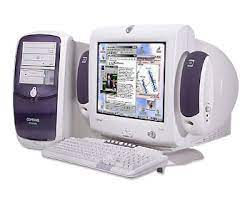

6th Generation (Pentium Pro/II/III/IV, 1996-2007): Gateway Essential, IBM NetVista, Compaq Presario 5000, Dell Dimension, Dell OptiPlex GX-series, Dell Latitude C-series The earliest 686 machines were Pentium Pros used as PC-based server machines mostly, usually serving Websites and web resources during the "dot com boom" of the 1990's. THese systems are rare and scarce but really cool if you can find one for a reaosnable price these days (good luck). The Pentium II seems to be the most common choice, along side the Pentium III, for a newer-ish DOS system, or a DOS/Windows 9x system capable of running a huge swath of late 80's-early 2000's games. Pentium 4 systems right now are still, surprisingly very cheap, but picking up in attraction as more of their titles are getting ostracized by modern Windows hardware due to differences in Windows then vs. now. The early part of the era was still largely dominated by Doom, Quake, Half Life, and Starcraft, with Warcraft taking off as well. Old franchises started to die out as Monkey Island's creator Ron Gilbert left Lucas ARts and the series taking a more cartooney turn against the original designer's intent, Origin and Maxis were bought out by Electronic Arts, with the final Ultima Installment, Ascention, being a huge failure, but Ultima Online and The Sims raking in the dough for E.A. Games. FPS, Sim/Tycoon/Theme type games were taking off, as well as other simulators, and Point'n'click Graphical adventures were falling by the wayside along with Guns N' Roses and flannel. The focus was on graphics, not just any graphics, 3D graphics, as NVIDIA and ATI started to war with each other on who could make a better GPU between 3xfx's VooDoo later NVIDIA's GeForce and ATI's Rage, and later Radeon cards. Eventually NVIDIA was the survivor with ATI being sold off to AMD sometime toward the middle/end of the oughts. As we near the end of this section of this massive page, and the end of this era, and the "modern" era began for sure, laptops started to dominate over desktops for the less clutter approach in the home. And since about 2005, the PC World has been largely a Windows NT-based 64-bit place with AMD, Intel, and NVIDIA working together and competing for dominance in the hardware market. Today, hardware holds far less importance and is almost generic save for some edge cases (ie the Ryzen threadripper systems and some ideas that hearken back to 1970's style "timeshare computing").GLossary of Stuff To Know... So now, as you know, computing is FULL of crazy acronyms, technical terms, and other "geek speak" or "greek" as many people call it. So here's a nice, handy, quick reference for vintage computing terms. Anyway, this is more of an introductory list. NOTE: Some of this has been deliberatley over-simplified to make it easier for a newbie to understand.. 286 aka, 80286, aka, "AT-Class". The Intel 80286 was a microprocessor released in 1982 and premiered in the IBM Personal Computer 5170 AT in 1984. It's commonly referred to as just a "286" (Two-Eighty Six). It's also used to referr to computers of the same era that carry that microprocesso, with a synonym being "AT" - referring to the "AT" at the end of the IBM Personal Computer 5170's model name that meant "Advanced Technology". 286s were en vogue from 1984-1991. 386 aka 80386, referred to as "Three Eighty Six" usually. The 386 was the first 32-bit Intel x86 compatible CPU, and the first computer to have it was the Compaq Deskpro 386 released in 1986. The 386 came in 2 variants, the 386 DX which was a fully 32-bit CPU with a 32-bit address bus, and then the 386 SX which was a 32-bit internal, 16-bit external CPU. This is also used to refer to any PC based on the 386 microprocessor. The 386 was popular from 1988 till about 1995. 486 aka 80486, also referred to as "Four Eighty Six", as well as by it's submodels the SX, DX, DX2, DX4, "Blue Lightning" etc. The SX had no math co-processor, while all other variants did. The DX2 and DX4 were clock double and clock triple processors ranging from 50Mhz to 120MHz. The AMD Am5x86 133 PR75 model CPU also counts as a 486 because that's what it's processor core is (with 586 Write-Back Capability wired in, and a smaller die and lower voltage). Again, also used to refer to machines carrying the chip or compatible chip of that era. The 486 was in production from 1989 till 2007, but was in use as a "user machine" from 1989 till about 2000 at the latest for most people. 586 aka. 80586, aka Pentium. The 586 was later rebranded as the "Intel Pentium Processor" because Intel could not trademark a number. The Pentium processor was on of the best known CPUs Intel ever made, to the point that the brand was revived again in the mid 2000's for a dual-core CPU (known as the "Pentium D") and later for a budget line of CPU aimed at machines in the 2010's. However, the original Pentium was a superscaler 32-bit CPU with a 64-bit memory address bus. Pentium is used to refer to both this era of PC, and sometimes even later ones (Pentium II/III/IV/D, etc). The Pentium era was 1993-2003, with it's heyday being 1995-2000. 686 aka. 80686, which also went under a ton of different names including the Pentium Pro, Pentium II, Celeron, Pentium III, and Pentium IV, and even has compatibility ranging right up into the present day Core i-series CPUs. Almost nobody uses "686" to refer to computers of these eras, but rather, uses their CPU marketing name instead ie. "Pentium II" or "Pentium 4". By the time this series was around, the numerical names were no longer in use. 80186 - a short lived, 16-bit CPU made by Intel used by a small handful of PC clones out there including the Tandy TRS-80 2000 which is considered merely a "MS-DOS Compatible", and also used in some early GRiD brand laptops. It featured some small enhancements from the 286 line. The 80186 was more often than not used as a "Micro-controller" on PC add-in cards and devices than as a full-on CPU even though it functioned as one. These machines are regarded as "XT" or "PC/XT" Class machines despite having a slightly more powerful CPU with a wider bus width (which was often not used). 8086 - The Intel 8086 was a 16-bit Microprocessor released in 1978 and was used in a handful of PC Clones after the IBM PC (which used the lower cost version below). Some notables included the Compaq Deskpro released in 1984, the AT&T PC 6300 (basically a rebranded Olivetti), and the IBM Personal System/2 Model 25 and model 30 (not to be confused with their fully VGA capabile 286 counterparts). These machines are regarded as "XT" or "PC/XT" Class machines despite having a slightly more powerful CPU with a wider bus width (which was often not used). 8088 - The intel 8088 is a cost-reduced version of the 8086 listed above. It's a 16-bit internal CPU with an 8-bit external bus for RAM and expansion cards. It was used notably in the original IBM Personla Computer 5150 and IBM Personal Computer 5160 XT, as well as the PC Jr, Tandy 1000/1000A/1000SX/1000EX, and counteless "Turbo XT Clones" that filled the market from 1984-ish onward. Generally, most 8088 class machines are referred to as "XT" or "PC/XT" class. Adlib - Adlib was a sound card standard created in 1987 and based around a series of Yamaha Synthesizer Chips - more often referred to as OPL (Operator Logic). Adlib later was absorbed into later soundcard standards such as SoundBlaster and Windows Sound System as a compatibility thing. If these sound familiar, the Yamaha YM-series chips used in these cards and their compatible newer siblings are the scame sound chipsed used in Yamaha's 1980's PortaSound (PSS/PSR) series keyboards. AMD (Advanced Micro Devices) - AMD was originally a licencee of Intel who made semiconductor chips for them under their own brand. They were the second most common CPU found in old Pre-Pentium computers. By 1989 they started deviating from Intel's designs, creating higher performance products than intel could (sometimes at the expensive of stability/reliability/thermal-resistance), with some smash hit products being the 386 DX-40, Am5x86 133 PR75 486-compatible chip, or their K6 line of PII performance "Super Socket 7" CPUs from the late 1990's that could bring a Pentium I up to par with a current Pentium II product performance-wise. AMI (American Megatrends) - AMI is a third party BIOS manufacturer who made BIOS for "white box" PC motherboards, starting around 1985. They were in competition with PhoenixView Technologies and Award Software. The BIOS refers to the firmware on these old PCs. AWARD Software - AWARD Software is a third party BIOS manufacturer who still makes BIOS/EFI Firmware for PCS to this day, and are incredibly popular with higher end board makers. They were in competition with Phoenixview Technologies and American Megatrends. AT - AT is both a model of IBM PC, and a Class of IBM Compatible. AT stands for "Advanced Technology" and was what IBM put at the end of the model name for their third major PC revision, the IBM PErsonal Computer 5170 AT, in 1984. Being as it was a 286 based machine, 286-class PCs are often referred to as "ATs" or "AT Clones", especially since the earlier clones had cases made to look very similar to IBM's own PC AT. ATA - A later version of the IDE HDD standard, mostly used to refer to "PATA" (Parallel ATA) Devices. These included hard drives, CD-ROM drives, SuperDisk Floppy Drives, ZIP Drives, JAZ Drives, and other drives commonly also available in SCSI or USB formats. ATA is generally used to refer to the HDDs also that were aimed at a specific bus speed ie ATA-66, ATA-100, or ATa-133, which were all HDD in 1GB-500GB or higher capacities that used the old 40pin IDE interface. Most regular ATA drives had a standard Master-Slave-Drive Select jumper in back as opposed to the multiple and confusing arrawy of non-standard jumper settings of earlier IDE devices. Cache - Refers to a form of RAM (Random Access Memory) used to store commonly fetch data for the short term to speed up the computer. There are level 1 (386), level 2 (486), and even level 3 (686+) caches. Prior to the Pentium Pro, some of this "cache" system(s) would be found as static DRAM Chips or a Cache On a STick (COAST) module. While they improve performance, it's generally a smaller amount than when you upgrade the main system RAM. Compaq - Compaq Computer Corporation was founded in 1982 by CEO Rod Canion, Bill Muerto, and Bill Harris - three ex- Texas Instruments employees who decided to start a business anew on their saved up venture capital. Intially planning to open a MExican Resturant, these three plus an engineer buddy sketched up an idea for a IBM Compatible portable PC on a pie plate at Houstons "House of Pies" and created the "Compaq Portable" - the first portable IBM compatible PC. In 1984 they released their first desktop PC, the "DeskPro". By 1987, Compaq was the fastest growing corporations in America and was a true competitor to IBM. DMA - Direct Memory Access....a method by which used to allow RAM/devices to directly access the CPU rather than go through a memroy controller. This is most often dealt with with sound card products such as Creative Lab's early SoundBlaster products. IBM - IBM stands for "International Business Machines". IBM was founded in 1911, and made business equipment such as Tabulating Machines, Punch-In clocks, and Wall Clocks for schools and businesses. In the 1940's after the invention of the Transistor, they made the move to Computers and became one of the most esteemed computer companies in the world. From th 1950's till the 1980's, IBM was best known for their massive mainframe computers used to run governments, businesses, and education worldwide. In 1981 they introduced the main reason they are here - the IBM Personal Computer 5150 or "IBM PC" as it's better known as today. Despite the machine's shortcomings it established IBM as a leader on the desktop and the server closet, and that computer started the lineage of today's modern WIndows desktop computers. IBM Personal Computer 5150 - The IBM PErsonal Computer 5150 is the computer that starts the lineage of all of today's PC's. It was desgined by IBM's Boca Raton Florida research facility, and built in Armonk New York and later abroad. The PC 5150 was a 16-bit desktop computer based on the intel 8088 microprocessor at 4.77MHz, and came standard with one or two floppy drives, Monochrome or color "CGA" video, an 83 key "Model F" keyboard, and a 5151, 5153, or 5154 CRT Display. It was produced until 1987 where it was discontinued and replaced by IBM/s Personal System/2 series (aka. PS/2). IBM Personal Computer XT 5160 - An updated version of the PC released in March 1983 and discontinued in 1987. It removed the cassette tape data storage capability of the original IBM PC, made the slot spacing smaller for expansion boards, and added 3 more expansion slots for a total of eight. It also was one of the first desktop personal computers available with a hard drive - a mere Seagate ST-412 10MB Full Height 5.25" MFM Hard Drive. Similar options to the original PC. IBM Personal computer AT 5170 - First 286 computer to market and the successor to the IBM XT (1983). This computer was based on intels 80286 microprocessor, a 16-bit CPU running at 6, later 8MHz in this machine. It also featured a internal hard disk drive, 1.2MB 5.25" floppy drives, and introduced the EGA video stadnard with the IBM 5154 EGA RGB monitor. IDE (Integrated Drive Electronics) - A hard disk controller standard that integrated all the controller circuitry onto the hard disk itself, and utilizes a 40 pin, 40 wire Ribbon cable. These drives ranged everywhere from a mere 20MB like earlier MFM/RLL/ST-506/412 devices, to up to 8GB in size. Around the mid 1990's, IDE was upgraded to a far more standardized standard known as ATA. Microsoft (company) - Microsoft is a software & services company (that sometimes sells hardwarE) founded in 1975 by Bill Gates and Paul Allen. The company's first product was Microsoft BASIC in 1975 for the MITS Altair S-100 hobbyist computer, which became a standard piece of software on every home computer including hte original IBM PC. Other products they sold/created include(d): MS-DOS/PC-DOS, Windows, Office (also available separately as Word/Excel/PowerPoint/etc.), Money, Encarta (multimedia encyclopedia), Internet Explorer (based on Mosaic), and many others. Currently Microsoft is still around with their core products being Office 365, Windows 10/11, and the Microsoft Surface line of laptops and convertible tablets. Steve Ballmer, originally one of the marketing leads in the 70's, took over as CEO in the 2000's, later being supersceded by Satya Nadella in 2013. Modem - A modem, in the classic computer sense, is a device that connected to a serial port on the computer, or was installed as an add-in card, and allowed you to dial up a Bulletin Board System (BBS) or the Internet, or some other form of Telecommunications using a standard, Analog, Landline Telephone Line (like those phones that plugged into the wall used). They are called a Modem because they MODulate and DEModulate an analog signal to transmit data - much like how a DAC converts digital music into analog audio we can hear. They were measured - speed wise - in "baud rate" ranging from 300 baud (really really slow), all the way to 56Kbps (56000 baud) or 56K for short, and could be external and connet to a serial or "COM" Port, or have an expansion card that connected to the internal bus of the computer. To connect to an ISP, you usually had a few "Local Area Access Numbers" to dial to to connect, and when you used it, it tied up the phone line, often to your parents/room mate/siblings chagrin. MS-DOS - Stands for MicroSoft Disk Operating System. MS-DOS was bought from Seattle Computer Products, where a engineer named Tim Patterson created it as "QDOS" or "Quick and Dirty Operating System" - which was really just a shorthand quick and dirty clone of Digital Research's CP/M operating system for an x86 class computer SCP was creating at the time. Microsoft basically bought it for $15,000 and did some tweaks here and there, and released it as PC-DOS 1.01 with the original IBM Personal Computer 5150 in August of 1981 - as one of three choices of Operating System that computer could have (Digital Research's more expensive CP/M-86, and of course, you could just buy the computer itself with Microsoft BASIC in ROM). It remained the de-facto standard x86 IBM Compatible Operating System until 1995, when it was replaced by Microsoft Windows 95. Network - Two or more PCs linked to each other allowing exchange/utilization of resources. A network of PC's that share independant resources with each other is referred to as a P2P or "Peer-to-Peer" network, where machines act as both a client, and a host. While a network of PC's in a "client/host" or "client/server" relationship has a group of PC's connected that share resources from one or more far more powerful computers referred to as a "server". PC-DOS (IBM) - The IBM-Branded version of Microsoft's MS-DOS operating system. When IBM Introduced the PC, IBM had Microsoft brand it PC-DOS, it later was branded MS-DOS when it was licenced to other OEMs while IBM Retained PC-DOS. After the OS/2-related split in 1989, IBM Continued to use PC-DOS branding though it separated off from the Microsoft MS-DOS series a bit with different features and different bundled programs. (IBM) PC Jr. - The IBM 4860 Personal Computer Jr. was a "consumer" computer "for the home" released sometime in 1983. It was basically a stripped down IBM PC-5150 without DMA, expansion slots, a non-standard video connector, a terrible to use and short-ranged "Chiclet" wireless keyboard (later replaced with a Infrared wireless "regular" style keyboard), and some expanded capabilities such as 16-color graphics in 320x200 and 160p graphics modes, and 3 voice audio via a Texas Instruments chip used in Arcade machines at the time. The PC Jr was a market failure, both due to it's lack of compatibility with a "regular" PC and the fact it was not as "compatible" as the other IBM offerings aimed at professionals. However, it's lineage carried on (see. Tandy 1000). PS/2 - Not to be confused with the Sony Playstation 2 game console - PS/2 refers to a set of standards set by IBM when they released their IBM PErsonal System/2 desktop computer line in 1987 which consisted of the 8086 based Model 25 AIO and Model 30 desktop, as well as the Model 70 286 Tower and Model 80 386 tower (aka. the "Stud"). These computers, despite their licencing requirements to copy the hardware - as an attempt by IBM to corner the PC market - did have some bits and pieces taken from them for "regular" PCs, most notably the PS/2 keyboard and mouse ports which were 2 small, mini-din six pin connectors used for the keyboard and mouse on a lot of 386 and newer desktops from 1990 onward. RAM - Random Access Memory, meaning the amount of memory found in the system used to store data as long as the machine is in an "on" state. RAM on an old 8088-present PC can range from a mere 16K (original IBM PC, base model), to a whopping 128GB of storage on a modern server. Memory is measured in speeds, earlier on listing the latency speed in millisecons or nanoseconds, nowadays using terms like "DDR4" and PC-2400 to list the speed of the memory based on it's bus speed. Socket 3 - Socket 3 was a Low-Insertion Force socket for Intel (80)486 CPUS. It had support for every Intel 486 CPU up through the AMD Am5x86 133MHz clock quadrupled 486 CPU, and CPUS that could use voltages from 3VDC (Am5x86, i/Am486 DX4), to the older full 5 volt CPUs (486 DX, 486 SX). (Super) Socket 7 - Socket 7 was a Intel Pentium era processor socket that could use the earlier Socket 5 75-133MHz Intel Pentium (586) CPUS, and could also support newer CPUs such as the 200 and 233MHz Pentium CPUS with and Without MMX Technology, and the AMD K5 and K6 upgrade chips. It was known as "Super Socket 7" because a computer with this socket on it's motherboard could run up to mid-level Pentium II class performance. Probably the closest thing to a truly upgradable platform since the 486 Socket 3. SoundBlaster - SoundBlaster is a series of sound cards - expansion boards that allow for full digital sound and FM Synthesys for music and audio - released in the late 1980's by Creative Labs. SoundBlaster cards are capable of both digital audio such as mp3 playback, and FM Synthesis compatible with the Adlib standard I mentioned above. Tandy 1000 (Series) - The Tandy 1000 was a line of IBM Compatible computers built by Tandy Corp and marketed by Radio Shack between 1984 and 1992. The series started with the original 1000 in 1984, the 1000HD and 1000A in 1985, the 1000 SX and 1000 EX in 1986, the 1000 TX and 1000 HX in 1987, the 1000 SL and TL series in 1988, and a handful of later machines towards the 90's. These machines were like regular IBM PC's (except the EX and HX) due to their standard 8-bit ISA Slots, 100% IBM Compatibility (that's kinda pushing it though), but htey carried over the enhanced sound and graphics of the IBM PC Jr. They became one of the top selling IBM Compatible PC lines of the 1980's and were produced up until AST bought out Tandy in 1992. The earliest models ran regular intel 8088 CPUs like IBM's did, but later models added 286 and 386SX CPUs to the lineup. Windows - Windows refers to a series of graphical user interfaces, later Operating Systems, released by Microsoft between 1985 and present day. Windows started with version 1.01 in 1985, versions 2.xx in 1987, 3.0 in 1989, with the line starting to take off with Windows 3.1 in 1992, and finally hitting it's stride with Windows 95 in 1995. Windows for awhile ran on two different underpinnings: MS-DOS for the 1/2/3/9x/Me line Windows Sound System (WSS) Windows Sound System was a sound card standard introduced by Microsoft sometime around 1991. It was a Microsoft Windows oriented sound-card and a cross-hardware driver platform used by Microsoft Windows 3.x (and likely integrated into 95 and later). The hardware was based on the Analog Devices 1848 Sound Codec chip and could produce 16-bit CD Quality audio, but was incompatible with SoundBlaster's audio standard as it used a different circuit and used different hardware addresses (ie a default of 530h vs 220h). Like SoundBlaster though, proper boards had Adlib compatible FM Synthesis. WSS did not always have FM Synthesis though - most vintage 486 laptops that got sound early on such as the Toshiba Sattelite, NEC Versa M-series, and Zenith Z-note omitted the FM Synthesizer, and often used a compatible chip known as the Crystal CS-4231 sold as "Crystal Business Audio". XT - XT is used both to refer to the IBM Personal Computer XT 5160 released in 1983, and to a class of machines known as "XT Class" which were machines that typically maxxed out at 640K RAM, ran MS/PC-DOS, and had an Intel 8088 Microprocessor running between 4.77-10MHz. Got Any Other Resources? Besides here, there's plenty out there....so here's a quick list of them....
VOGONS ForumThe "Marvin" section is where you'll want to go for the PC hardware stuff Another good place to actually see this stuff and get ideas is YouTubers since there's a lot of us now. Of course there's me (Creepingnet) in between guitar/truck/other stuff videos. Lazy Game Reviews aka LGR, 8-bit Guy, Adrian's Digital Basement, RetroSpector, DaveJustDaveRetro, Ben Heck, Beige-O-Vision, BBISHOPPCM's World, VWestlife, even Techmoan has stuff periodically, and if you get into CRTs SHANGO66 can be quite a help as well. There's a lot of us around doing this now so there's a lot of stuff to take in from all sides regarding vintage PCs and related stuff that might be helpful for certain nissues. In Closing There's probably a lot here and this page is already pretty long, so I think I'll stop here for now. I'll add more to this page as I get more ideas on stuff that might help folks out just starting out in using vintage PC's for whatever reason. There's probably a whole lot I did not think of on the first draft and I'm pretty sure I'm not done with this - Stay Tuned. |